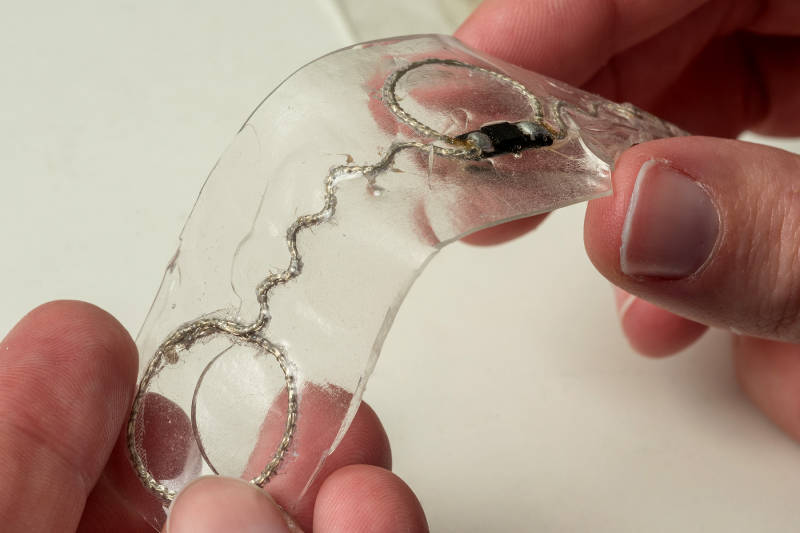Promising Medical Applications
Researchers think portable sensors and antennas sewn into fabrics caps could be paired with technology, now in development, to enable tracking of deep brain activity through wireless implants. The combination would allow for 24-hour brain monitoring in patients with neurological conditions like epilepsy or Parkinson's disease. Currently, doctors can only monitor patient's brain activity while they're in the hospital.
Other applications for embroidered circuits could include imaging sensors in T-shirts, which could measure the growth of a tumor or detect fluid in lungs, research scientist Asimina Kiourti says.
Volakis is especially excited that smart clothes could benefit senior citizens.
“Imagine when an elderly person falls down, you could detect the event," he says. "You could monitor the vitals for elderly people in a T-shirt. Or you could sense glucose levels and heart rates. This is not an appendage, this is part of your clothes. They don’t even know they’re wearing it.”
Precision Embroidering = Cutting Edge Technology
Functional textiles, also called e-textiles, are created in part on a typical sewing machine. The researchers substitute traditional thread with ultra-thin metal wires, which once embroidered feels just like fabric thread. Each filament is copper at the center, enameled with pure silver.
"We started with a technology that is very well-known--machine embroidery--and we asked, how can we functionalize embroidered shapes?" Volakis says. "How do we make them transmit signals at useful frequencies, like for cell phones or health sensors?"
"Now, for the first time, we've achieved the accuracy of printed metal circuit boards, so our new goal is to take advantage of the precision to incorporate receivers and other electronic components."
Is There a Market?
The research team has manufactured prototypes that cost a fraction of the amount and take half the time to create compared to similar products just two years ago.
"The next step is to have all these antennas and circuits integrated fashionably into clothing," says Kiourti. "No one is going to buy something with a large antenna sticking out."
Kiourti says Fitbits and smartwatches are paving the way for wearables, but a $100 T-shirt will still be a tough sell, so lowering cost will be a key factor in developing products.
The research has been published online in the journal IEEE Antennas and Wireless Propagation Letters.

